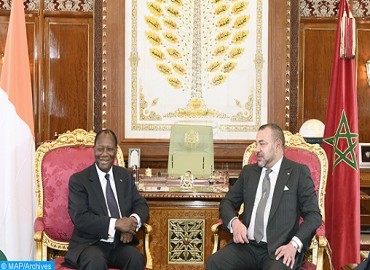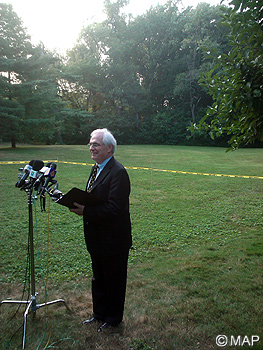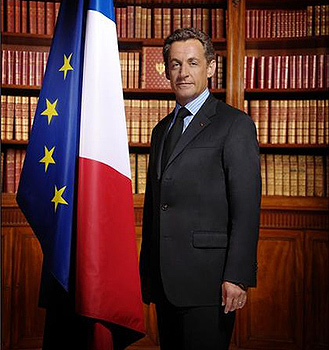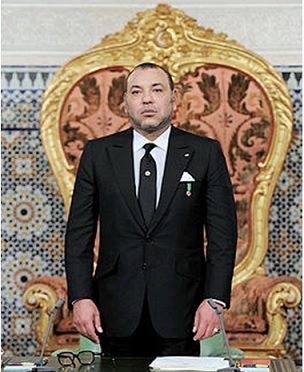New National Agricultural and Forestry Programs Reinforcing Royal Vision for Sustainable and Inclusive Development
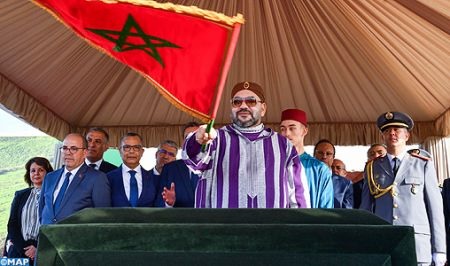
PERSISMA, Morocco, Chtouka Ait Baha – HM King Mohammed VI, accompanied by HRH Crown Prince Moulay El Hassan, presided, on Thursday in the province of Chtouka Ait Baha, over the launch ceremony of the new development strategy for the agricultural sector dubbed “Green Generation 2020-2030” and the one relating to the development of the water and forest sector called “Forests of Morocco”.
At the start of this ceremony, an institutional film was screened highlighting the development dynamics witnessed by the agricultural sector during the last decade, thanks notably to the Green Morocco Plan (PMV), with testimonies from farmers who have benefited from this Plan.
Subsequently, Minister of Agriculture, Fisheries, Rural Development, Waters and Forests Aziz Akhannouch presented before the Sovereign the broad lines of the new strategies “Green Generation 2020-2030” and “Forests of Morocco”.
Akhannouch said, on this occasion, that the new strategic vision of the agricultural sector was developed in accordance with the Royal High Guidelines laid down in the speech of the Sovereign on the occasion of the opening of the 1st session of the 3rd legislative year of the 10th legislature (October 12, 2018).
In this speech HM the King had called for a consolidation of the achievements made in the agricultural field and for the creation of new activities generating jobs and incomes, mainly in favor of young people in rural areas, with a view to encouraging the emergence of an agricultural middle class, to foster its framework so that it can, ultimately, exercise its dual calling of factor of balance and lever of socio-economic development, like the urban middle class and the key role assigned to it, recalled the Minister.
This strategy is based on capitalizing on the achievements made by the Green Morocco Plan, through the adoption of a new vision for the agricultural sector, the reinforcement of new governance and the provision of modern means to the sector, he added.
Akhannouch underlined the achievements made under the Green Morocco Plan, launched by the Sovereign in 2008, and, in particular, the signing of 19 program contracts, the implementation of 12 regional agricultural plans, the creation of four new agencies, the entry into force of 4,500 legal texts, and more than 34 billion dirhams mobilized by international funding.
At the macroeconomic level, the PMV has enabled the multiplication of agricultural GDP and agricultural exports, as well as the increase in the volume of investments, noted Akhannouch, explaining that at the social level, the PMV has helped create job openings and increase coverage rates of food needs.
In terms of sustainability, the Plan has helped save irrigation water, consolidate the resilience of agriculture and reduce rain-dependent agriculture, in addition to boosting integration dynamics for small and medium-sized agriculture, benefiting 2.7 million farmers, he said.
Akhannouch said that the Moroccan agricultural sector aims to reach a new level in its development, noting that the new agricultural strategy is based on two main foundations, namely the enhancement of the human element, in accordance with the Royal Guidelines, and through the emergence of a new generation of agricultural middle class (350,000 to 400,000 households), and the emergence of a new generation of young entrepreneurs, through the mobilization and development of a million hectares of collective lands and the creation of 350,000 jobs for young people.
This middle class and these young farmers will also be able to use a new generation of more innovative agricultural organizations and benefit from new support measures allowing them to build their skills, the minister said.
According to Akhannouch, the second foundation of this new strategy is related to the continuation of the development dynamic of the sector, by promoting human and social development.
For this, the new vision provides for the consolidation of agricultural sectors, with a view to increasing exports (50 to 60 bln MAD) and the agricultural GDP (200 to 250 billion MAD) by 2030, improving the distribution processes of products through the modernization of 12 wholesale and traditional markets, said Akhannouch.
It also concerns strengthening the resilience and sustainability of agricultural development, as well as improving the quality and capacity of innovation, noted Akhannouch, adding that approvals will be granted to 120 modern slaughterhouses and health control will be reinforced.
The implementation of this strategy will require an annual increase in the budget of the sector of almost 2.5% as of the year 2020, said the Minister.
On the new strategy on the water and forest sector “Forests of Morocco”, Akhannouch stressed the importance of forests which stretch over a surface area estimated at 9 million ha, and their environmental, economic and social role.
In this context, he affirmed that the Moroccan forest is in a dilapidated state, due notably to the deterioration of 17,000 ha of forest land every year, the low enhancement of cork oak forests, the over-harvesting in firewood and over-exploitation of grazing areas.
To strengthen the competitiveness of the sector and ensure its modernization, the new water and forest strategy was developed on the basis of an integrated, sustainable and wealth-generating management model.
This new strategy aims to make forests a space for development, to ensure the sustainable management of forest resources, to adopt a participatory approach involving users, to strengthen the productive capacities of forests, and to preserve biodiversity, said the minister.
He went on to say that this strategy aims, by 2030, to repopulate 133,000 ha of forests and to create 27,500 additional direct jobs, in addition to improving the incomes of the production chains and ecotourism to reach an annual market value of 5 billion MAD.
To do this, the new strategy will touch on four main pillars, namely the creation of a new model based on a participatory approach associating the populations with management, the development of forest areas according to their wealth, the promotion and modernization of forest professions through the creation of modern forest nurseries and the introduction of the digital tool in the management of the sector, and finally the institutional reform of the sector via the establishment of a pole of training and research, and the creation of a Water and Forest Agency and a Nature Conservation Agency.
This strategy also provides for the development and enhancement of ten national parks, with a view to ensuring economic and social development with full respect for the natural, cultural and territorial heritage.
These two new strategies will be implemented starting 2020, in particular at the territorial level according to the specificities and assets of each region, and this in coordination with all stakeholders, according to the principles of good governance in terms of monitoring and evaluating investors as well as efficiency and output indicators, underlined Akhannouch.
The Sovereign then launched the project to plant 100 ha of argan trees in the commune of Imi Mqouren (1.8 million MAD), a project which is part of the program to plant agricultural argan trees in the province of Chtouka Ait Baha over an area of 1,250 ha.
This program, which concerns 7 communes and benefits 729 people, requires around 28 million dirhams. It is part of a global argan cultivation development program covering an area of 10,000 ha, in the regions of Souss-Massa, Marrakech-Safi and Guelmim-Oued Noun.
This global program (2017-2022) mobilizes a budget of 490 million MAD, financed by the Green Climate Fund (390 Mln MAD) and the Moroccan Government (100 Mln MAD), and benefits the provinces of Essaouira (2,885 ha), Taroudante (1,337 ha), Sidi Ifni (627), Chtouka Ait Baha (1,250), Guelmim (623 ha), Tiznit (3,188 ha), as well as the prefecture of Agadir Ida Outtanane (90 ha).
HM the King also launched the irrigation network construction works from the Agadir seawater desalination station, whose construction works are at a progress rate of 65%.
The construction of this station is in line with the objectives of the national program for the supply of drinking water and irrigation 2020-2027, launched by the Sovereign last January and aimed at consolidating and diversifying the sources of drinking water supply, supporting demand for this invaluable resource, guaranteeing water security and combating the effects of climate change.
Covering an area of 20 ha, this station, located 40 km south of Agadir on a coastal site north of the town of Douira, Commune of Inchaden, within the Souss Massa National Park, aims to meet the drinking water needs of Greater Agadir and the irrigation water needs of the Chtouka plain (15,000 ha).
With a total cost of 4.41 Bln MAD, including 2.35 Bln MAD for its irrigation component and 2.06 Bln MAD for its drinking water component, this project, the first of its kind in Africa, consists of the setting up of best processes, notably reverse osmosis technology, and existing equipment in the field of seawater desalination and water distribution.
This project consists of the construction of marine works (two supply lines of 1.100 ml in length each equipped with intake towers, a discharge outlet of 660 ml long with diffuser), a desalination station and irrigation infrastructure (storage tank, 5 pumping stations, main adductor 22 km and distribution network 489 km).
The desalination unit, to be operational by March 2021, will initially produce 275,000 m3/day at a rate of 150,000 m3/day of drinking water and a flow of 125,000 m3/day of irrigation water. Its facilities will ultimately offer a total capacity of 400,000 m3/day which should be shared equitably between agriculture and drinking water.








